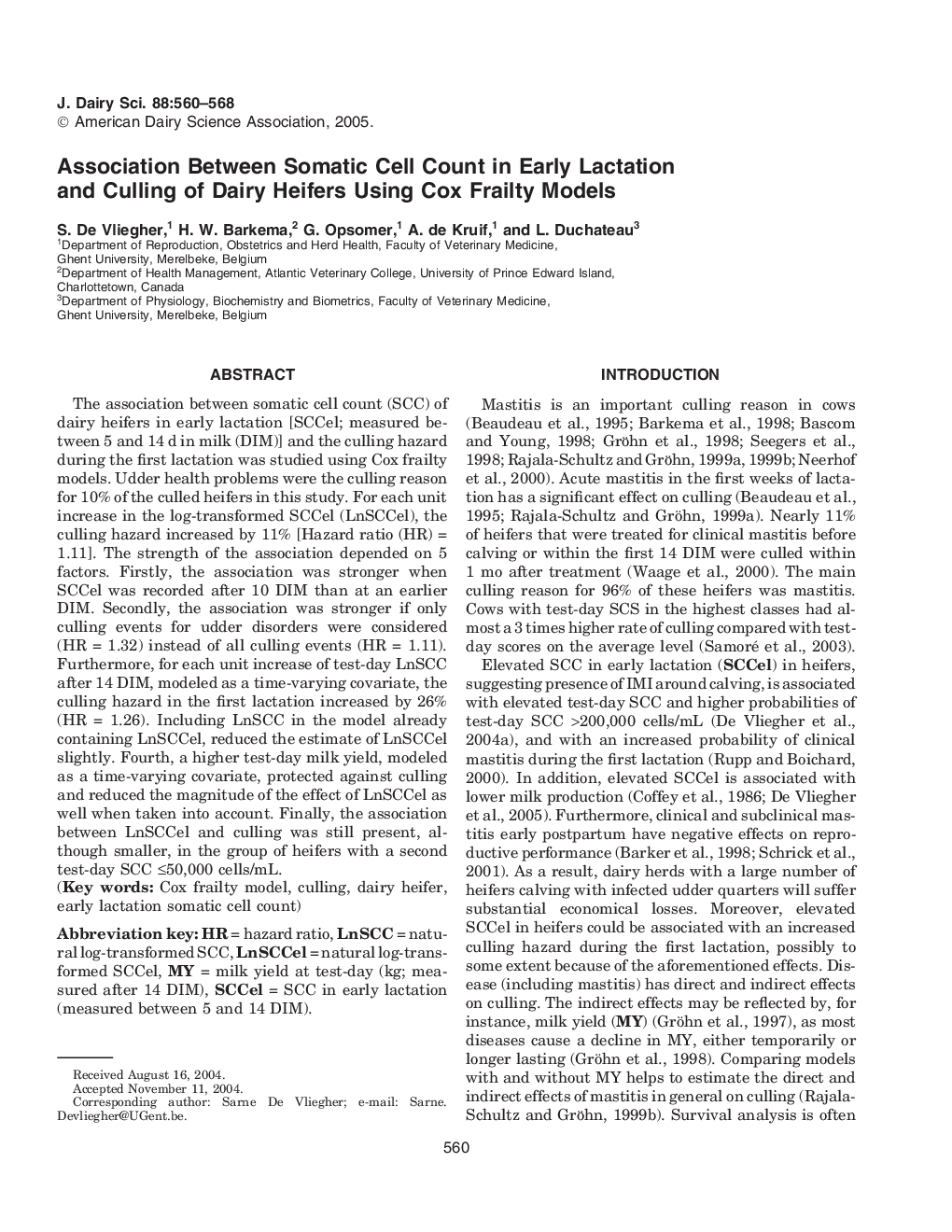| Article ID | Journal | Published Year | Pages | File Type |
|---|---|---|---|---|
| 8981175 | Journal of Dairy Science | 2005 | 9 Pages |
Abstract
The association between somatic cell count (SCC) of dairy heifers in early lactation [SCCel; measured between 5 and 14 d in milk (DIM)] and the culling hazard during the first lactation was studied using Cox frailty models. Udder health problems were the culling reason for 10% of the culled heifers in this study. For each unit increase in the log-transformed SCCel (LnSCCel), the culling hazard increased by 11% [Hazard ratio (HR) = 1.11]. The strength of the association depended on 5 factors. Firstly, the association was stronger when SCCel was recorded after 10 DIM than at an earlier DIM. Secondly, the association was stronger if only culling events for udder disorders were considered (HR = 1.32) instead of all culling events (HR = 1.11). Furthermore, for each unit increase of test-day LnSCC after 14 DIM, modeled as a time-varying covariate, the culling hazard in the first lactation increased by 26% (HR = 1.26). Including LnSCC in the model already containing LnSCCel, reduced the estimate of LnSCCel slightly. Fourth, a higher test-day milk yield, modeled as a time-varying covariate, protected against culling and reduced the magnitude of the effect of LnSCCel as well when taken into account. Finally, the association between LnSCCel and culling was still present, although smaller, in the group of heifers with a second test-day SCC â¤50,000 cells/mL.
Keywords
Related Topics
Life Sciences
Agricultural and Biological Sciences
Animal Science and Zoology
Authors
S. De Vliegher, H.W. Barkema, G. Opsomer, A. de Kruif, L. Duchateau,
